Most turfgrass managers understand the concept of ‘plant stress’, such as when under drought, heat, freezing and disease conditions, but how many understand what is happening inside the plant that affects its growth and health? This article introduces the subject of Reactive Oxygen Species (ROS), how the plant attempts to scavenge ROS with antioxidants, and how turfgrass managers can help to protect and enhance turfgrass physiology.
The production of Reactive Oxygen Species (ROS) in plants under normal growth conditions is low as the plant is able to produce sufficient anti-oxidants to scavenge ROS. In response to various environmental stresses, however, ROS are drastically increased in plants disturbing the normal balance (homeostasis) in the intracellular environment. The enhanced production of ROS during environmental stresses can pose a threat to cells through the leakage of electrons from energy chains during photosynthesis, or by "stealing" electrons from the lipids in cell membranes. When the level of ROS exceeds the defense mechanisms, a cell is said to be in a state of “oxidative stress.” The delicate balance between ROS generation and ROS scavenging is altered by stress factors such as salinity, drought, extreme temperatures, heavy metals, pollution, high irradiance, pathogen infection, etc (Figure 1).
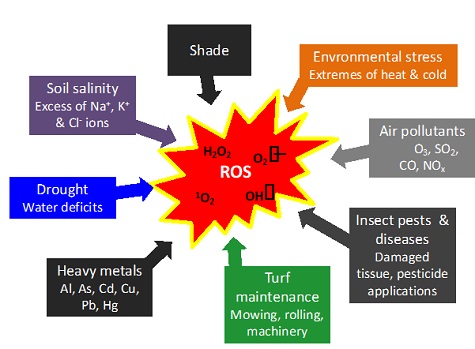
Figure 1. Various causes responsible for the generation of ROS. Adapted from:
https://www.frontiersin.org/files/Articles/121942/fenvs-02-00053-r2/image_m/fenvs-02-00053-g001.jpg
TYPES OF ROS
There are four main types of Reactive Oxygen Species, namely, singlet oxygen (1O2), hydrogen peroxide (H2O2), superoxide radical (O2•−), and hydroxyl radical (OH•) (Table 1). Various stresses will trigger different ROS.
Table 1. Different members of the ROS family and their attributes. Adapted from: Huang H et al. (20219). Mechanisms of ROS Regulation of Plant Development and Stress Responses. Frontiers in Plant Science 10:800. Doi: 103389/fpls.2019.0080, and
https://www.frontiersin.org/files/Articles/121942/fenvs-02-00053-r2/image_m/fenvs-02-00053-t001.jpg
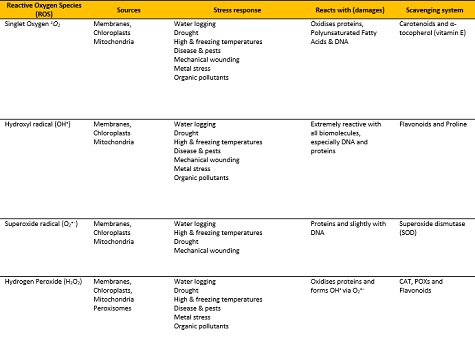
SITES OF ROS PRODUCTION IN PLANT CELLS
Reactive Oxygen Species (ROS) are produced in chloroplasts, mitochondria, plasma membranes, peroxisomes, apoplast, endoplasmic reticulum, and cell walls (Figure 2). ROS are always formed by the inevitable leakage of electrons onto O2 from the electron transport activities of chloroplasts, mitochondria, and plasma membranes or as a by-product of various metabolic pathways localized in different cellular compartments. Plant stress is most damaging to the photosynthetic machinery and is the largest cause of the decline of playing surfaces.
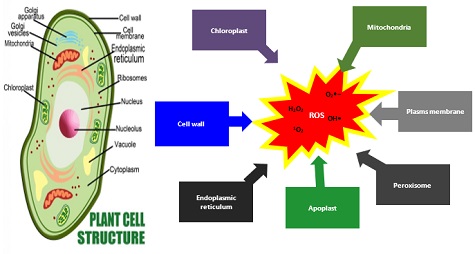
Figure 2: Sites of production of reactive oxygen species (ROS) in plants. ROS are produced at several locations in the cell-like chloroplast, mitochondria, plasma membrane, peroxisomes, apoplast, endoplasmic reticulum, and cell wall. Plant Cell Structure: http://www.haylab.caltech.edu/projects/3_project/
TARGETS OF ROS
Enhanced level of ROS can cause damage to biomolecules such as lipids (structural components of cell membranes), proteins and DNA (Figure 3). These reactions can alter intrinsic membrane properties like fluidity, ion transport, loss of enzyme activity, protein cross-linking, inhibition of protein synthesis, DNA damage, and so forth ultimately resulting in cell death.
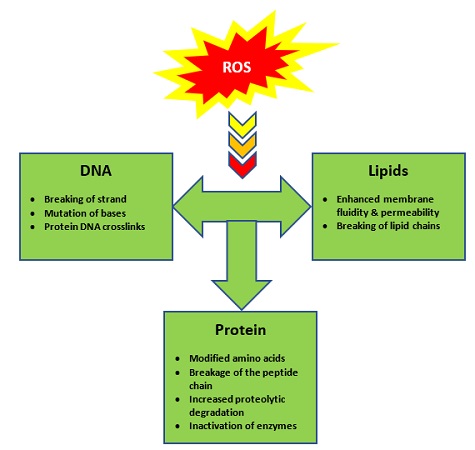
Figure 3. Various targets of ROS. Adapted from;
https://www.frontiersin.org/files/Articles/121942/fenvs-02-00053-r2/image_m/fenvs-02-00053-g003.jpg
ROS DEFENSE MACHINERY
Plant tolerance to stress-induced oxidative damage largely depends on rapid and efficient detoxification of ROS. Plants possess complex antioxidative defence systems comprising of non-enzymatic and enzymatic components that scavenge ROS (Table 2). In plant cells, specific ROS producing and scavenging systems are found in different organelles such as chloroplasts, mitochondria, and peroxisomes.
Plants respond to ROS by collaboratively using one or more antioxidants at the same time, and a lot of energy is spent by the plant in defending itself. The turfgrass surface can suffer as the plant puts energy into protection at the expense of growth, such as recovery from wear. The turfgrass manager can utilise a variety of treatments that help to increase photosynthesis, enhance antioxidant activity, increase energy reserves and protect cell components from ROS attack.
Table 2. List of enzymatic and non-enzymatic antioxidants along with their functions and cellular localization. Adapted from:
https://www.frontiersin.org/files/Articles/121942/fenvs-02-00053-r2/image_m/fenvs-02-00053-t002.jpg

MANAGING REACTIVE OXYGEN SPECIES IN TURFGRASS SURFACES
Protection of turfgrass surfaces from environmental effects and pathogen attack starts with good, basic turf management, i.e. mowing heights and frequencies, thatch control, aeration, topdressing, fertilising etc. with each turfgrass surface and facility having its own specific management requirements. Good turf management cannot be bypassed in chasing a quick fix but can be made more effective. The following recommendations are treatments that focus specifically on strengthening turfgrass cells, protecting the photosynthetic machinery, and enhancing scavenging of Reactive Oxygen Species.
Nutrition
Turfgrass plants need nutrients to enable them to grow and recover from mowing, wear, and all the other ‘normal’ pressures of preparing playing surfaces. Adequate levels of macro and micronutrients are vital in ensuring the photosynthetic machinery, cell structures and phytohormone responses are in a healthy condition. Each playing surface and grass species requires its own nutrition regime and these details are not covered in this article. I will, however, mention that nitrogen, potassium and calcium are central to healthy cells, and micronutrients are required to act as catalysts in physiological and metabolic reactions. Shortages in these will decrease photosynthesis and severely restrict turfgrass plant health and vigour.
Biostimulants
The definition of plant biostimulants is subject to debate, but the latest seems to be, “A material which contains substance(s) and/or microorganisms whose function when applied to plants or the rhizosphere is to stimulate natural processes to benefit nutrient uptake, nutrient efficiency, tolerance to abiotic stress, and/or crop quality, independently of its nutrient content.” (www.frontiersin.org/articles/10.3389/fpls.2020.00040)
i. Carbon
A low plant carbon content reduces photosynthetic activity, which reduces carbohydrate availability to the turfgrass plant. For example, an abundant source of carbon in the thylakoid membranes inside the chloroplasts can be mobilized for use as an energy source during senescence. Carbon is best applied in the form of carbohydrates from cane sugar molasses, and liquid seaweed formulations.
ii. Amino Acids
Amino acids fulfil a wide variety of functions including the building blocks of proteins and are involved as active catalysts and precursors in all metabolic, regulatory and physiological aspects of turf plant metabolism. The application of L-Amino Acids plays an extremely important part in developing the proteins specifically designed to help chloroplasts, thylakoid membranes and photosystem machinery to function properly in stress conditions. L-Amino Acids have been shown to scavenge hydroxyl radicals by increasing superoxide dismutase (SOD), an important antioxidant enzyme, and help turfgrass surfaces withstand stress due to temperature, drought, heavy metals, low mowing heights and machinery & foot traffic.
iii. Humic & Fulvic acids
Humic and fluvic acids are distinguished by their molecular size and activity in soils and plants, with humic acids having a larger molecular size than fulvic acids. Humic acids stimulate root initiation due to their auxin-like activity and ability to inhibit indoleacetic acid oxidase breakdown. Humic/fulvic acids contain antioxidant properties that promote the scavenging of free radicals (ROS), increase the availability of macro and micro nutrients to the plant, and enhance the chlorophyll content in leaves.
iv. Seaweed Extracts
One of the major components of commercial liquid seaweed extracts are the long chain polysaccharides, or carbohydrates. These sugars promote plant growth and are elicitors of plant defences against fungal pathogens. Brown seaweeds, eg Ascophyllum nodosum, are also rich in phenolic compounds, which are secondary metabolites synthesised when a plant is under stress and protect cells and cellular components by scavenging ROS. Seaweed extracts also help the plant to withstand stress through its phytohormone content; auxins, cytokinins, betaines, gibberellins, abscisic acid and brassinosteroids. Seaweed has little nutritional value and the real benefits of seaweed formulations lie in their antioxidant properties, elicitors of plant defences, and in helping the plant to uptake nutrients from the rootzone and moving them around the plant to where required.
v. Salicylic Acid
Salicylic acid is a common phenolic compound that functions as a plant growth regulator and protects photosynthesis under heat stress. Salicylic acid also increases the nitrogen use efficiency in plants under stress.
vi. Trinexapac Ethyl
Trinexapac Ethyl (TE) is used primarily as a growth retardant of turfgrass surfaces (e.g. Primo), but it also reduces the effects of environmental stress. TE treated turf has significantly higher leaf chlorophyll, photosynthesis and water content than untreated, with better recovery after stress conditions.
Antioxidants
Maintaining high levels of ascorbic acid (vitamin C) is essential for the scavenging of ROS, being an excellent scavenger of the hydroxyl radical that damages photosynthesis. Other antioxidants include a-tocopherol (vitamin E), carotenoids (B-carotene), vitamin B6 (found in Marmite) and mannitol (a sugar found in seaweed), and play a vital role in scavenging free radicals and help to protect chloroplasts, thylakoid membranes inside the chloroplasts, and photosynthetic machinery.
Conclusion
Increasing research into ROS and antioxidants is resulting in discoveries of other plant derived molecules that can play a large role in managing turfgrass surfaces in less than optimum conditions. Two examples are from my own work with 1-Triacontanol and 5-aminolevulinic acid that show enhanced performance of turfgrass surfaces in shade.
Selected references:
Choudhury FK, Rivero RM, Blumwald E & Mittler R (2016). Reactive oxygen species, abiotic stress and stress combination. The Plant Journal: Volume 90, Issue5, Pages 856-867. Available at: https://doi.org/10.1111/tpj.13299
Hagg J: Understanding and Managing Oxidative Stress in Turfgrass: Preventing Free Radical Damage in Turfgrass. Available from Amazon: https://www.amazon.co.uk/Understanding-Managing-Oxidative-Stress-Turfgrass-ebook/dp/B074311V2C/ref=sr_1_fkmr0_1?dchild=1&keywords=understanding+and+managing+oxidative+stress+in+turf+grass&qid=1586085484&sr=8-1-fkmr0
Naser A. Anjum, Amreen, Aadil Y. Tantray, Nafees A. Khan, Altaf Ahmad (2020). Reactive oxygen species detection-approaches in plants: Insights into genetically encoded FRET-based sensors. Journal of Biotechnology 308 (2020) 108–117 https://doi.org/10.1016/j.jbiotec.2019.12.003
Rouphael Y & Colla G (2020). Editorial: Biostimulants in Agriculture. Frontiers in Plant Science. Available in full: https://www.frontiersin.org/articles/10.3389/fpls.2020.00040/full.
Sharma P, Jha AB, Dubey RS & Pessarakli M. (2012). Reactive Oxygen Species, Oxidative Damage, and Antioxidative Defense Mechanism in Plants under Stressful Conditions. Journal of Botany 2012. Article ID 217037. Available at https://doi.org/10.1155/2012/217037
Singhal RK, Kumar V, Kumar S & Choudhary BL. (2017). High Light Stress Response and Tolerance Mechanism in Plant. Interdisciplinary journal of Contemporary Research, Vol.4, No.1. Available from: https://www.researchgate.net/publication/334720694_High_Light_Stress_Response_and_Tolerance_Mechanism_in_Plant
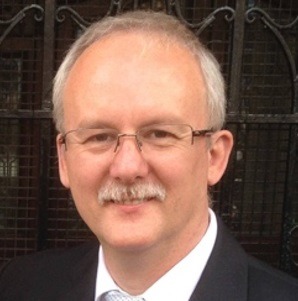 The author: Andrew Turnbull MRes, has had a varied career in the turfgrass industry. He has been Head Groundsman, Golf Course Manager, Construction Agronomist, College Tutor and business owner. Andrew first developed carbohydrate products for turfgrass surfaces in 2007, and over the past few years has helped other companies to develop and supply biostimulant products to the turfgrass market. Andrew has recently (2020) completed a Master of Research degree at the University of Nottingham during which he developed a biostimulant that enhances photosynthesis in shade.
The author: Andrew Turnbull MRes, has had a varied career in the turfgrass industry. He has been Head Groundsman, Golf Course Manager, Construction Agronomist, College Tutor and business owner. Andrew first developed carbohydrate products for turfgrass surfaces in 2007, and over the past few years has helped other companies to develop and supply biostimulant products to the turfgrass market. Andrew has recently (2020) completed a Master of Research degree at the University of Nottingham during which he developed a biostimulant that enhances photosynthesis in shade.